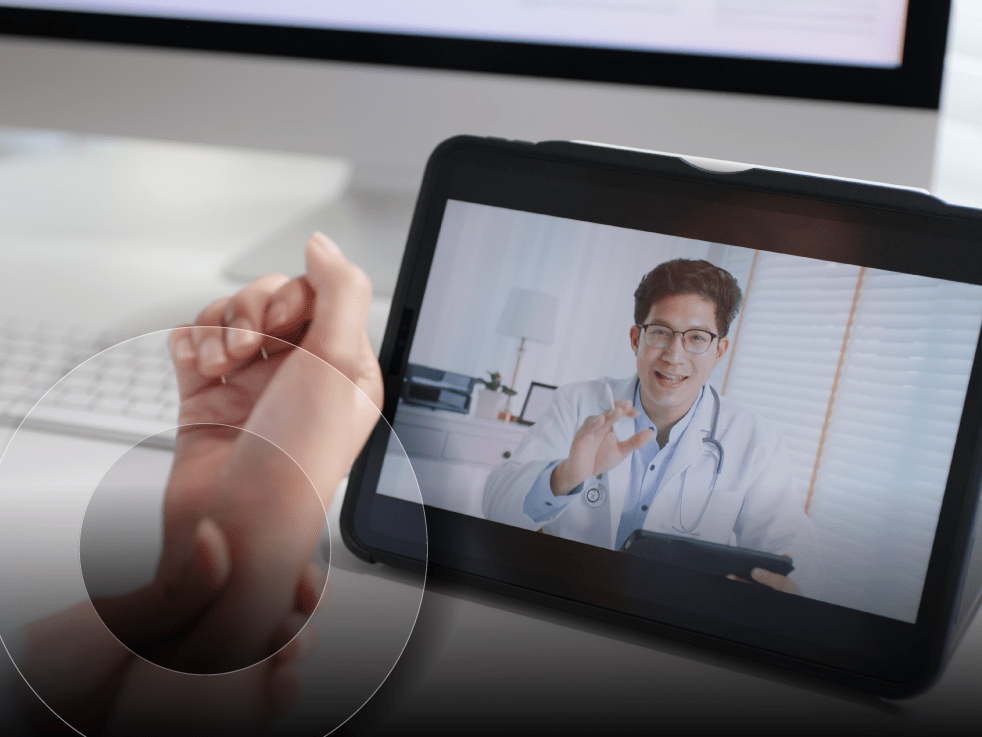Why AI is the missing piece of the modern collaboration space puzzle:
AI-powered collaboration tools are here. But are your meeting spaces built to support them?

By the end of last year, more than 50% of U.S. professionals were working in a hybrid environment, while only 21% were fully in office. Yet office environments haven’t kept pace with that shift.
Teams toggle between platforms, navigate incompatible hardware, and lose productivity to preventable friction. At the same time, employees expect better. They’ve upgraded their home setups and they’ve grown used to seamless experiences powered by smart devices and real-time automation.
The SHI Spring Summit brought those frustrations and their solutions into sharp focus. In a session featuring SHI specialists and Cisco’s Pratik Chanda, one question kept surfacing: How do we equip meeting rooms, and the people in them, for the way collaboration actually works now?
The conversation didn’t dwell on features or flash. It examined what it takes to create meeting experiences people want to be part of, whether they’re in a huddle room, a hybrid call, or a fully remote sprint.
The answers pointed to artificial intelligence (AI).
AI-powered collaboration is now the standard
AI has moved from pilot programs into the center of how teams collaborate. By the end of 2024, 78% of organizations were using AI in at least one business function, up sharply from 55% the year before, according to McKinsey. Meeting rooms and collaboration platforms were among the fastest adopters.
Tools like Microsoft Copilot, Cisco RoomOS, and Zoom’s AI Companion now automate the most essential parts of meetings. They capture real-time transcription and can translate languages. They recognize speakers and assign follow-ups automatically. They frame the camera view dynamically so remote participants can stay engaged without distractions.
The result is more than administrative convenience. Collaboration feels smoother, more equitable, and more focused. Remote participants no longer strain to hear or wonder if their contributions are overlooked. In-person attendees no longer dominate the conversation by accident. AI removes barriers without introducing friction.
Organizations that embraced these capabilities raised expectations. Employees accustomed to seamless AI-powered interactions inside meetings now expect the same flexibility, adaptability, and speed from the spaces around them. Collaboration tools have evolved. Meeting spaces must evolve with them.
At SHI’s Spring Summit, Cisco’s Pratik Chanda joined SHI’s Michael McCracken and Dominick Raimato to discuss the impact AI has on our virtual and physical meeting spaces.
Workspaces built for movement, not mandates
Offices built for five-day-a-week occupancy don’t fit the way people work today. Only 40% of U.S. companies now maintain a one-to-one desk-to-employee ratio, down from 56% the previous year. Hot desking, hoteling, and shared workspaces became the norm, driven by smaller real estate footprints and smarter scheduling.
That shift demands workspaces that match the flexibility employees expect from their digital tools. Purpose-built spaces from small focus rooms to large divisible meeting areas allow collaboration to happen on employees’ terms. Informal lounge spaces, writable surfaces, and modular tech installations give teams options without forcing awkward compromises.
Data makes those designs smarter. Chanda highlighted how embedded sensors in modern collaboration devices now track room usage, occupancy rates, and even ambient noise levels. Organizations that tap into this data can right-size their spaces instead of guessing. Some companies saved millions in facilities investments simply by recognizing that their existing hardware already collected the metrics they needed.
The model has shifted from static assignments to active optimization. When a meeting space can adapt to the people inside it, and AI can streamline the connection between devices, rooms, and platforms, collaboration becomes less about logistics and more about outcomes.
Building collaboration spaces that meet expectations
Delivering seamless, AI-enhanced collaboration takes more than new tools. It requires planning, expertise, and solutions designed around how people work today. And that’s where SHI comes in.
Our services help organizations reimagine their meeting environments to match the new standards AI-powered collaboration has set. Through our unified communications and collaboration solutions, we can help you align platforms, spaces, and experiences without adding complexity. Our experts work across leading technologies — including Microsoft, Cisco, and Zoom — to design environments that are flexible, inclusive, and ready for hybrid demands.
Every engagement starts with understanding the current state of collaboration. Through workshops, assessments, and detailed room design planning, our specialists identify the spaces that matter most and the opportunities to deliver better employee experiences with AI-driven capabilities. Whether it’s equipping huddle rooms for intelligent video framing or enabling conference rooms for cross-platform interoperability, our meeting room services ensure every deployment fits the organization’s real usage patterns and goals.
But we don’t stop at technology selection. We work with you to integrate AI-enhanced collaboration into your workflows, train teams to leverage new features, and manage ongoing optimization over time. By combining infrastructure, intelligence, and employee-centric design, we can help you transform meeting spaces from functional to exceptional.
Closing the gap between technology and space
AI has reshaped how teams connect and collaborate. Meetings run more smoothly. Conversations move faster. Remote participants stay engaged without having to fight for attention.
But collaboration doesn’t end with better software. It depends on spaces that support the way people work now, not the way offices were built five or ten years ago.
Organizations that align their meeting environments with the realities of hybrid work stand to gain more than convenience. They create workplaces where decisions come faster, teams stay more connected, and time spent together delivers greater value.
Ready to reimagine your meeting spaces? Contact us to learn how our services can bring AI-powered collaboration to every room you build.




